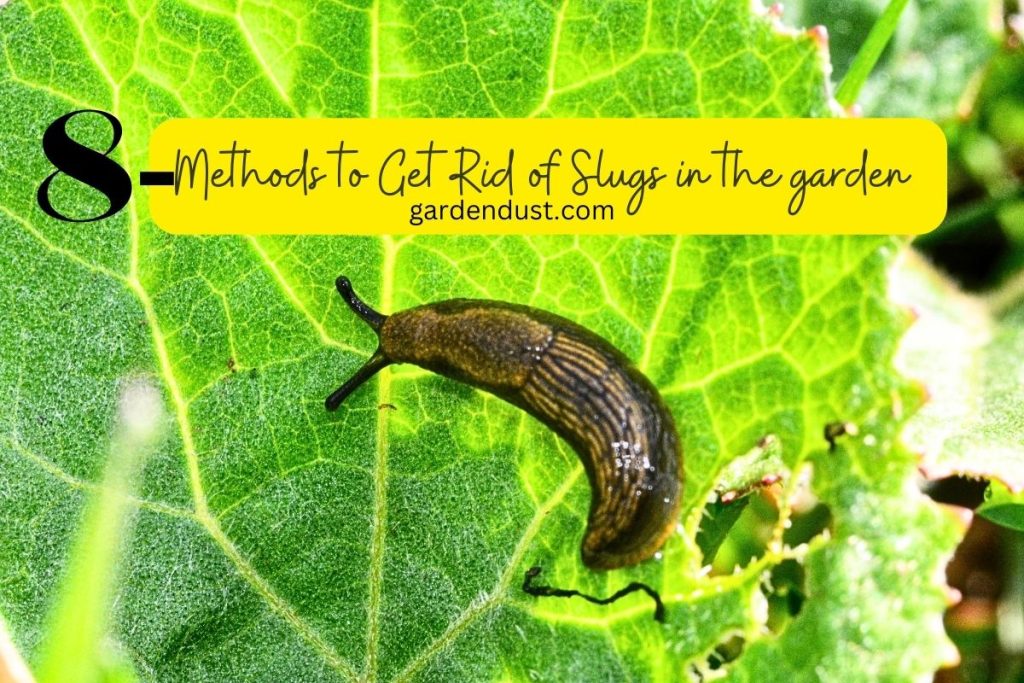Gardens are a sanctuary for nature lovers and a source of pride for homeowners, but they can also attract unwanted guests like slugs. Slugs are common garden pests that can wreak havoc on plants and flowers. Their voracious appetite and ability to multiply quickly make them a formidable adversary for gardeners. However, with a strategic and multi-pronged approach, it is possible to manage and control slug populations without resorting to harsh chemicals. In this comprehensive guide, we will delve into various methods to How to Get Rid of Slugs in the Garden while maintaining a healthy and vibrant outdoor space. Let’s start….
Understanding Slugs’ Behavior
Before diving into eradication methods, it’s important to understand the behavior of slugs. Slugs are most active during damp and humid conditions, primarily at night. They are attracted to dark and moist environments and feed on a variety of plant materials. Knowing their habits will help you tailor your approach to effectively manage them.
8 Methods:-
1-Cultural Control Methods
- Maintain Dry Conditions: Since slugs thrive in moist environments, reducing excessive moisture in your garden can be a powerful deterrent. Water your plants early in the morning to allow excess moisture to evaporate during the day.
- Clear Debris: Slugs seek shelter in garden debris like fallen leaves and mulch. Regularly clear these areas to eliminate hiding spots.
- Elevate Planters: If you have potted plants, placing them on elevated surfaces can make it harder for slugs to reach them.
2-Natural Predators
Encouraging natural predators of slugs can help keep their population in check:
- Frogs and Toads: These amphibians are excellent slug hunters. Create habitats like small ponds or shelters to attract them to your garden.
- Birds: Birds, such as thrushes and ducks, enjoy slugs as a tasty snack. Provide bird feeders and bird baths to attract them.
3-Mechanical Barriers
- Copper Tape: Slugs dislike the sensation of copper. Place copper tape around the base of plants or create barriers around vulnerable areas to discourage them from crossing.
- Eggshells and Sand: Create rough surfaces around plants using crushed eggshells or coarse sand. Slugs will find it difficult to crawl over these sharp textures.
4-Organic Slug Repellents
- Beer Traps: Bury containers filled with beer in the ground so that the lip is level with the soil. Slugs are attracted to the beer’s aroma and will fall in and drown.
- Diatomaceous Earth: This natural substance contains sharp, microscopic edges that cut into slugs’ bodies, causing them to dehydrate and die.
5-Handpicking
A labor-intensive but effective method is handpicking. Go out at night with a flashlight and pick off slugs by hand. Dispose of them in a bucket of soapy water to prevent their return.
6-Biological Control
Introduce nematodes (microscopic worms) that parasitize slugs without harming plants. These beneficial organisms can help reduce slug populations over time.
READ ALSO :-6 Natural Ways To Get Rid Of Mealybugs
7-Plant Selection
When it comes to combating slug infestations in your garden, selecting the right plants can make a significant difference. Some plants are less appealing to slugs due to their taste, texture, or scent.
Opting for slug-resistant plants can help minimize slug damage and create a more resilient garden environment. Here are several options to consider:
A. Herbs with Strong Aromas:
- Rosemary: Known for its potent scent, rosemary acts as a natural repellent to slugs. Its woody texture and aromatic oils make it an unappealing choice for these pests.
- Sage: With its strong fragrance and fuzzy leaves, sage is another herb that slugs tend to avoid. Its leaves can deter slugs due to their texture.
- Thyme: Thyme’s aromatic oils and low, sprawling growth habit can discourage slugs from feeding on nearby plants.
B. Plants with Hairy or Tough Leaves:
- Lavender: The fragrance and rough texture of lavender leaves can deter slugs. Its tall spikes also make it challenging for slugs to navigate.
- Ferns: Many fern varieties have delicate fronds covered in fine hairs, making them less palatable to slugs.
C. Flowers with Distinctive Textures:
- Geraniums: Geraniums have sturdy stems and leaves that slugs find less appealing. Their variety of colors adds beauty to your garden while deterring slugs.
- Foxgloves: The tall spikes and tubular flowers of foxgloves can be challenging for slugs to maneuver, making them a less attractive target.
D. Leafy Greens and Vegetables:
- Kale: The tough, curly leaves of kale are less enticing to slugs. Additionally, kale’s strong growth habit can withstand some slug feeding.
- Lettuce Varieties: Certain lettuce types, like loose-leaf varieties, tend to be less favored by slugs due to their tender yet less succulent leaves.
E. Ornamental Grasses:
- Fountain Grass: With its dense clumps of thin leaves, fountain grass is less likely to be targeted by slugs.
- Blue Fescue: The fine, spiky texture of blue fescue grass can be a deterrent to slugs seeking a moist hiding spot.
8-Companion Planting
Certain plants, like chives, mint, and rosemary, have repellent properties that can deter slugs from nearby plants.
Final Thoughts
Dealing with slugs in the garden requires a combination of strategies to effectively manage their population while maintaining a healthy ecosystem. By understanding their behavior and employing cultural, natural, mechanical, and organic control methods, you can strike a balance between a thriving garden and a slug-free environment. Remember that persistence is key – a combination of approaches tailored to your garden’s specific conditions will yield the best results. With dedication and careful management, you can enjoy the beauty of your garden without the hassle of slugs undermining your hard work. Happy Gardening…
READ ARTICLE :-How To Prevent Tomato Fruitworms:- Symptoms & Cause






